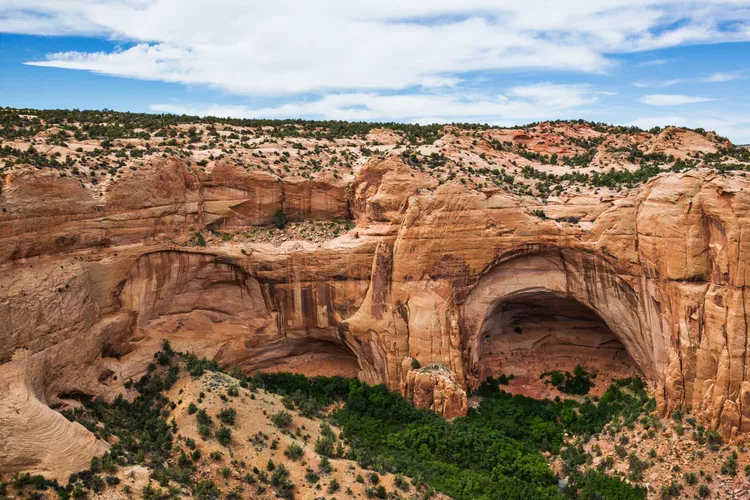Summary
A Vision of Antonio Armijo
In 1829, at just 25 years old, Antonio Armijo set out to find a new path westward. He led a party of 60 men and 100 mules across the vast landscape between what is now Santa Fe, New Mexico, and Los Angeles (at the time of his journey, this region was still part of northern Mexico), in hopes of discovering prosperous land for himself and his community. What he found was much larger than the 61 people who set out on the expedition. Ultimately, he created a path for hundreds of others to follow: the Old Spanish Trail.
The Historic Journey
Armijo’s journey, which covered just over 1,000 miles, commenced in Santa Fe and continued west to Abiquiu, New Mexico, passing through locations like Page, Arizona; Las Vegas; Barstow, California; and finally reaching Los Angeles. The path used by subsequent traders eventually branched into three trails: Armijo’s original route and two additional trails that lead farther north toward destinations such as Taos, New Mexico, yet eventually reconnect with the original trail. Collectively, these three pathways now form the official 2,700-mile national historic trail.
Challenges on the Trail
Armijo’s trek marked a significant event for Hispanic heritage. The route, already known to Indigenous people and earlier Hispanic explorers, allowed for the establishment of trade connections between Santa Fe and L.A. However, navigating the trail posed numerous challenges. According to the State Historic Preservation Office of Nevada, the Old Spanish Trail was fraught with peril, including treacherous landscapes of craggy mountains, rapid rivers, and extreme climate shifts. Moreover, explorers faced dangers from horse thieves and those who exploited the trail for unethical purposes. Despite these obstacles, the trail served its purpose in transporting goods and people over decades.
Revival and Modern Exploration
After the Mexican-American War in 1848, the Old Spanish Trail fell into disuse, supplanted by wagon roads. However, in 2002, it was officially designated by Congress as one of the country’s 19 national historic trails. Although hiking the entirety of Armijo’s route is difficult today due to highway construction, visitors can explore key sections on day trips or undertake an epic road trip to visit significant stops along the trail.
The trail operates through a partnership between the National Park Service and the Bureau of Land Management, with the support of volunteers from organizations like the Old Spanish Trail Association. They work diligently to maintain and preserve the trail. At its starting point in New Mexico, travelers can visit the Museum of Spanish Colonial Art, which showcases artifacts from the time period of the trail’s operation.
Travelers can also walk in Armijo’s footsteps in Amargosa Canyon in California, where numerous hiking trails mirror the path of the explorers. Further retracing history, adventurers can hike the Old Spanish Trail Heritage Loop in Utah and discover old wagon ruts and historical remnants. In Colorado, visitors can explore the Fort Uncompahgre Interpretive Center, which recreates the 1829 trading hub experience.
As historian Guy McClellan aptly noted, “The Old Spanish Trail provides an opportunity to interrogate some of the biases that we might have” and encourages exploration of our collective history, revealing some of the most beautiful landscapes across the nation, one mile at a time.




